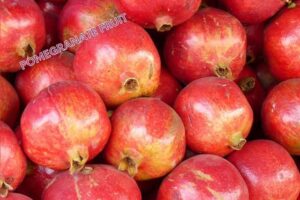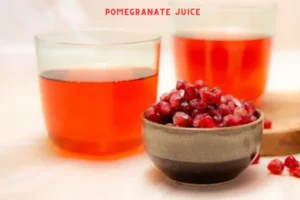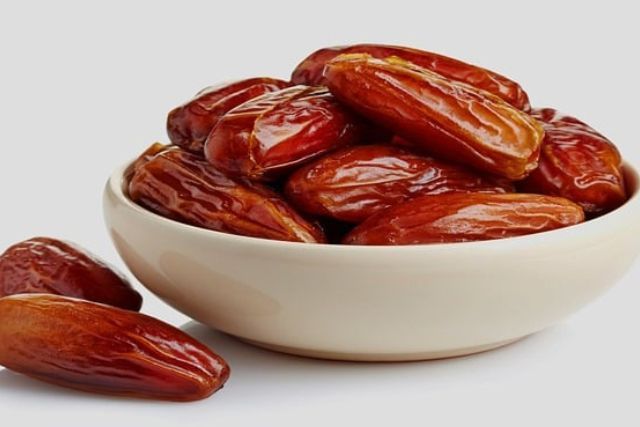Cold hardy pomegranate

Pomegranates, those ruby-red jewels of the fruit world, have long captivated our taste buds and imaginations. Originating from the ancient lands of Iran and northern India, these fruits have played a significant role in various cultures and traditions. Traditionally associated with warm climates, pomegranates are now breaking free from geographical constraints through the development of cold-hardy varieties. This shift in cultivation practices opens up new possibilities for regions with colder winters, allowing them to experience the vibrant flavors and health benefits of this remarkable fruit. In this in-depth exploration, we embark on a journey into the realm of cold-hardy pomegranates, uncovering their origins, characteristics, cultivation techniques, and the culinary wonders they offer. Cold hardy pomegranate.
Origins and Legacy of Pomegranates
Pomegranates, scientifically known as Punica granatum, have a rich historical legacy that dates back thousands of years. The cradle of pomegranate cultivation is believed to be the region extending from modern-day Iran to northern India. These fruits have found mention in ancient texts, mythologies, and art, symbolizing fertility, prosperity, and abundance in various cultures.
As trade routes expanded and civilizations intermingled, pomegranates journeyed across continents, reaching the Mediterranean, the Middle East, and eventually making their way to different corners of the globe. The fruit’s symbolic significance and nutritional value ensured its place in religious rituals, ceremonies, and everyday culinary traditions.

The Evolution of Cold-Hardy Pomegranates
The traditional image of a pomegranate orchard may be one bathed in the warm sun of the Mediterranean or Middle East, but modern agricultural innovation has challenged this perception. As growers faced the challenge of expanding cultivation into colder climates, the need for pomegranate varieties that could withstand chilly winters became apparent. This necessity led to the development and selection of cold-hardy pomegranate cultivars, marking a new chapter in the fruit’s long history.
Breeders and horticulturists focused on identifying genetic traits that confer cold tolerance to pomegranates. Through careful selection and hybridization, they aimed to create varieties that could thrive in regions with colder winters, extending the geographic range where pomegranates could be cultivated successfully.
Distinctive Traits of Cold-Hardy Pomegranates
The journey towards cold-hardy pomegranates involves understanding the unique traits that set them apart from their traditional counterparts:
Cold Tolerance: The defining characteristic of cold-hardy pomegranates is their ability to endure colder temperatures without significant damage. While traditional varieties might suffer from frost, cold-hardy cultivars showcase resilience, allowing them to withstand winter chills.
Early Ripening: Some cold-hardy varieties boast an advantage in their ripening time, allowing growers in colder climates to harvest their fruits before the full onset of winter. This early ripening feature adds a strategic element to cultivation, providing growers with a wider harvesting window.
Compact Growth Habit: Certain cold-hardy cultivars display a more compact growth habit. This attribute makes them particularly suitable for smaller gardens, urban spaces, or even container cultivation, broadening the possibilities for pomegranate enthusiasts with limited growing space.
Adaptability: Cold-hardy pomegranates showcase adaptability to various soil types and environmental conditions. This flexibility allows growers to experiment with cultivation in different climates, bringing the joy of pomegranate cultivation to unexpected regions.

Cultivating Cold-Hardy Pomegranates A Comprehensive Guide
Cultivating cold-hardy pomegranates successfully requires a nuanced understanding of environmental factors, soil conditions, planting techniques, and ongoing care.
Here is a comprehensive guide to cultivating these resilient fruits:
Site Selection: Choose a spot with ample sunlight and excellent air movement. Cold-hardy pomegranates thrive in well-drained soil, so ensure proper drainage to prevent waterlogging. Consider the specific microclimate of your region and select cultivars that align with your climate zone.
Soil Preparation: Incorporate organic matter and ensure good drainage. Cold-hardy pomegranates prefer slightly acidic soils with a pH of 5.5–7.0. Conduct a soil test to evaluate nutrient levels and apply any necessary amendments.
Planting: Plant pomegranate trees in the spring after the last frost. Dig a hole slightly larger than the root ball and backfill with soil, making sure the graft union is above the soil line. Maintain proper spacing between trees to allow for optimal air circulation.
Watering and Fertilization: Provide regular irrigation during the growing season, especially in dry periods. Apply a balanced fertilizer in the spring to support healthy growth. Mulching around the base of the tree helps retain soil moisture and suppress weeds.
Pruning and Training: Prune pomegranate trees annually during the dormant season. Remove dead or diseased branches and shape the tree to encourage an open canopy. Training young trees to a central leader or an open vase shape helps distribute sunlight evenly.
Pest and Disease Management: Monitor pomegranate trees for common pests such as aphids, scale insects, and fruit borers. Implement cultural practices like proper sanitation and companion planting to reduce pest pressure. Organic or chemical controls may be necessary in severe infestations.
Winter Protection: In regions with harsh winters, provide winter protection for pomegranate trees. Wrap the trunk with burlap or use tree wrap to prevent frost damage. Consider using protective structures like frost blankets during extreme cold spells.

Notable Cold-Hardy Pomegranate Varieties
A diverse array of cold-hardy pomegranate varieties caters to different tastes and growing conditions. Here are some noteworthy cultivars:
‘Russian 26’: Originating from Ukraine, this cold-hardy variety is celebrated for its sweet-tart flavor and high fruit yields. Its adaptability makes it a favorite among growers in colder climates.
‘Salavatski’: Hailing from the Caucasus region, ‘Salavatski’ is known for its cold tolerance and large, juicy arils with a mild, sweet flavor. It’s a reliable choice for regions with chilly winters.
‘Wonderful’: While not as cold-hardy as some other varieties, ‘Wonderful’ can withstand moderate frost. It is prized for its deep red arils and complex, sweet-tart flavor, making it a popular choice in diverse climates.
‘Parfianka’: Originating from Turkmenistan, ‘Parfianka’ stands out for its exceptionally sweet and flavorful arils. Cold tolerance, vigorous growth, and a delightful taste make it a sought-after cultivar.
Culinary Uses and Nutritional Benefits
Beyond their ornamental appeal, pomegranates are revered for their culinary versatility and health benefits. The unique burst of sweet-tart juice from each aril makes them a delightful addition to various dishes. Explore the culinary wonders of pomegranates through these uses:
Fresh Consumption: Enjoy the crisp, juicy arils fresh as a snack or add them to salads for a burst of flavor and texture. Their vibrant color makes them an attractive garnish for both sweet and savory dishes.
Juicing: Extract the ruby-red juice from pomegranate arils to create refreshing beverages, marinades, and sauces. Pomegranate juice can be used as a base for cocktails or blended into smoothies, adding a nutritional boost and a distinctive taste.
Preserves and Syrups: Harness the intense flavor of pomegranates by turning them into preserves, jams, or syrups. These can be used as toppings for desserts, spread on toast, or incorporated into sauces for savory dishes.
Dried Fruit: Dehydrate pomegranate arils to create nutritious and flavorful dried fruits. These make for excellent snacks, additions to trail mixes, or ingredients in baked goods.

Health Benefits Pomegranates
Pomegranates have earned their superfood status due to the myriad health benefits associated with their consumption:
Pomegranates are high in antioxidants, particularly polyphenols and anthocyanins. These substances help to neutralize free radicals in the body, thereby protecting cells from oxidative damage.
Heart Health: Regular pomegranate eating has been related to better heart health. The fruit may assist to lower blood pressure, cholesterol levels, and improve overall cardiovascular function.
Anti-Inflammatory Properties: Pomegranates contain anti-inflammatory compounds that may help mitigate inflammation in the body. Chronic inflammation is associated with various diseases, and the anti-inflammatory effects of pomegranates contribute to overall health.
Cancer Prevention: Some studies suggest that the antioxidants in pomegranates may have anti-cancer properties, inhibiting the growth of certain types of cancer cells. While more research is needed, these initial findings are promising.
Joint Health: Pomegranates may have a positive impact on joint health, potentially reducing symptoms of arthritis and joint pain. The anti-inflammatory effects contribute to relieving discomfort associated with inflammatory joint conditions.
What is the most cold hardy pomegranate?
The ‘Russian Red’ pomegranate variety stands out as the most cold-hardy, thriving in temperatures as low as -10°F. Its ability to withstand harsh winter conditions makes it an excellent choice for colder climates.Top of Form
Which pomegranate grows best in cold climates?
The ‘Russian Red’ pomegranate is the optimal choice for cold climates, excelling in regions with harsh winters. Its remarkable cold hardiness allows it to thrive and bear fruit even in challenging conditions.
Can pomegranates grow in the cold?
Yes, certain varieties like the ‘Russian Red’ pomegranate demonstrate impressive cold hardiness, thriving in chilly climates. With proper care and protection, pomegranate plants can withstand and flourish in colder temperatures.
What is the lowest temperature for pomegranate?
Pomegranates, particularly the robust ‘Russian Red’ variety, can endure temperatures as low as -10°F (-23°C). This remarkable cold tolerance allows them to thrive in challenging winter conditions.
Conclusion:
As we celebrate the triumph of flavor and resilience encapsulated in cold-hardy pomegranates, we recognize that the journey is ongoing. Research and experimentation continue to push the boundaries of cultivation, promising even more opportunities for enthusiasts to embrace the beauty of pomegranates in diverse climates. In this intersection of tradition and innovation, the cold-hardy pomegranate stands as a symbol of adaptability, offering a taste of sweetness even in the face of challenging conditions.





